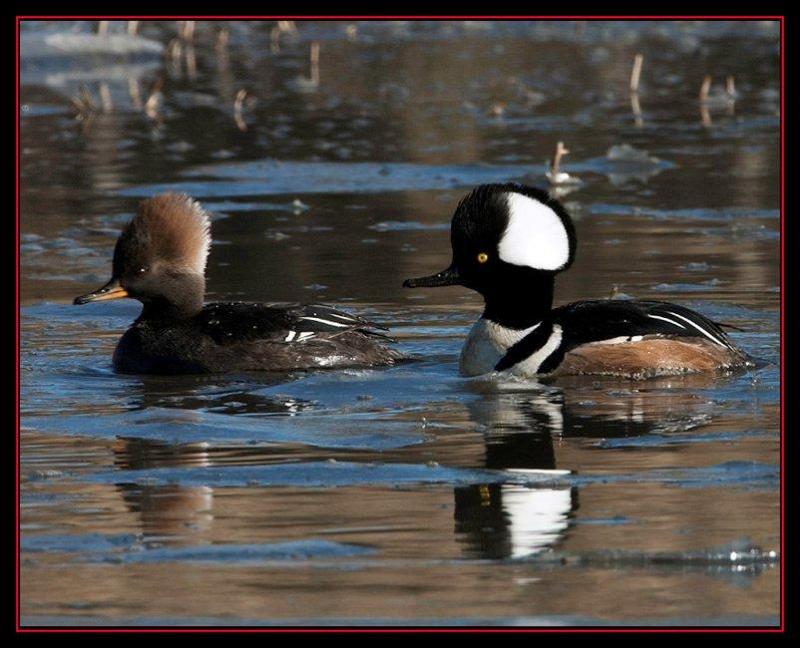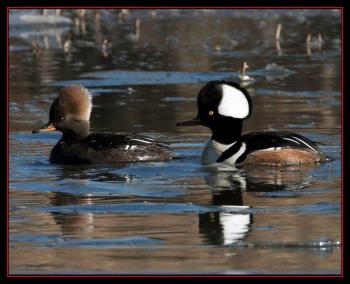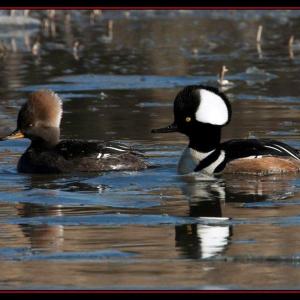Mergansers, the show-offs
We visited one of our favorite Maine places, Reid State Park, last weekend and enjoyed watching a very spiffy male red-breasted merganser who was closely following and courting a female of the species.
The courtship displays of ducks are quite interesting, one might say even odd. Spend a little time watching them and if you didn’t know what they were up to, you might conclude that the displaying male had gone crazy.
The male red-breasted merganser’s displays by stretching the neck out and then dipping the front of the body underwater while spreading the bill wide open. With its shaggy green crest and thin, bright red bill, it makes for quite a sight and, one has to assume, a sight that is (dare we say?) sexy to the female red-breasted merganser.
The red-breasted merganser’s bigger, bulkier cousin, the common merganser, prefers freshwater rather than salt as is the red-breasted preference. At this time of year, as the ice melts and flows out of the rivers, there can be hundreds, even thousands of common mergansers.
The males, with their bright white bodies, are easy to detect as they gather there in flocks. In a setting like that, you can see lots of fascinating courtship display behavior. In this species the male swims circles around the female, then stretches his head and bill skyward. It is quite a sight to see. And so is the mating display of yet another cousin, the third member of the merganser tribe that we have in North America, the hooded merganser.
The smallest of our mergansers, the hooded merganser is about the size of a wood duck, and it often occurs in similar freshwater habitats. But in migration and winter, hooded mergansers also can form flocks and occur in sheltered bays and estuaries of Maine.
The male hooded merganser, in its courtship display, can flair its normally closed crest into an impressively wide and bold head ornament, looking like a wild warrior, especially with the strongly contrasting eye.
But it’s not war that’s on the minds of these guys. Instinct tells them that if they don’t kick their machismo into high gear, there are show-offs out and about ready and waiting to flex their crests and woo the lady birds with their head-tipping, neck-stretching, body-dipping language of love.
So if you’re out birding and happen to see what appears to be strange-acting mergs, no need to worry, they don’t need help. They just doing their best to look (can we say it?) ducky!
Dr. Jeff Wells is the senior scientist for the Boreal Songbird Initiative. During his time at the famed Cornell Lab of Ornithology and as the Audubon Society's national bird conservation director, Dr. Wells earned a reputation as one of the nation's leading bird experts and conservation biologists. Jeff's grandfather, the late John Chase, was a columnist for the Boothbay Register for many years. Allison Childs Wells, also formerly of the Cornell Lab of Ornithology, is a widely published natural history writer and a senior director at the Natural Resources Council of Maine. Together, they have been writing and teaching people about birds for decades. The Maine natives are authors of the highly acclaimed book, “Maine's Favorite Birds.”
Event Date
Address
United States



























